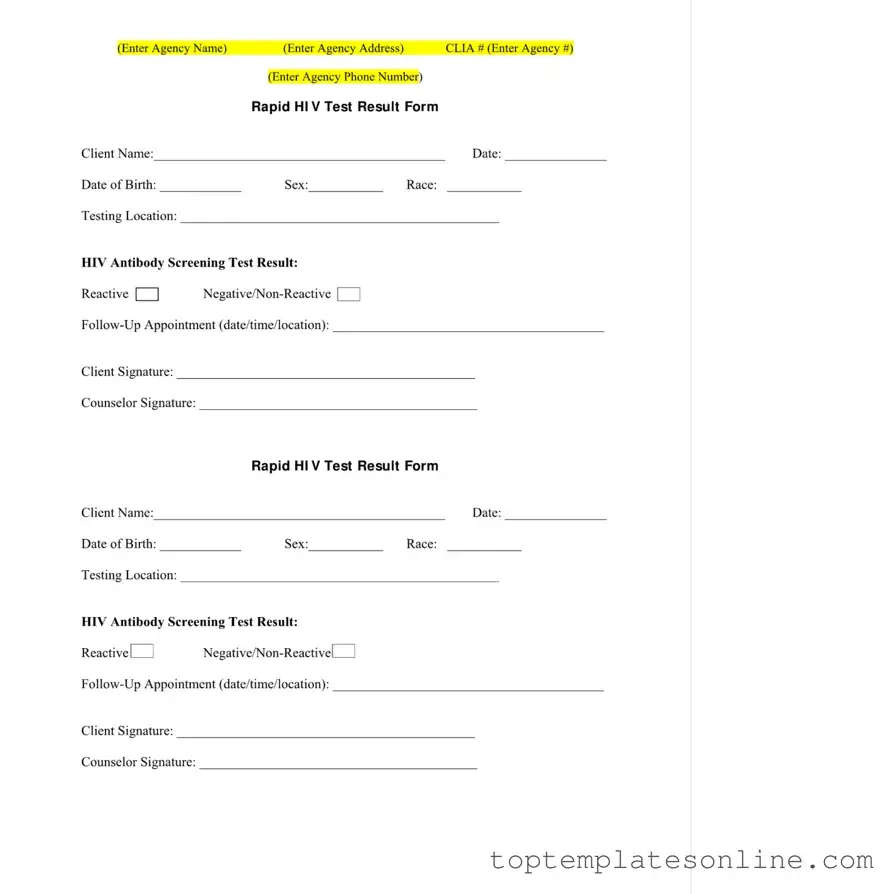The Negative HIV Test form serves as a crucial document in the process of HIV testing, encapsulating essential information that ensures both the accuracy of results and the proper follow-up care for clients. This form includes vital details such as the client's name, date of birth, and race, which help in identifying the individual and maintaining accurate records. Additionally, it specifies the testing location and the result of the HIV antibody screening test, which can either be reactive or non-reactive. The form also emphasizes the importance of follow-up appointments, providing space for scheduling future visits. Signatures from both the client and the counselor affirm the authenticity of the results and the understanding of the next steps. Furthermore, the form is accompanied by temperature logs for storage conditions of the testing devices, ensuring they remain within acceptable ranges to maintain test integrity. By documenting these aspects, the Negative HIV Test form not only facilitates effective communication between healthcare providers and clients but also plays a pivotal role in the overall management of HIV testing protocols.
